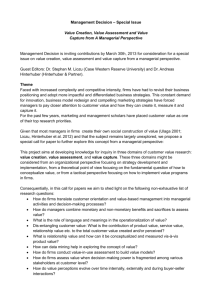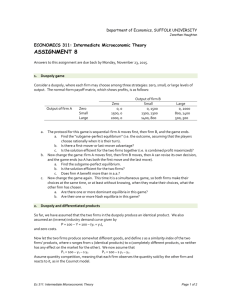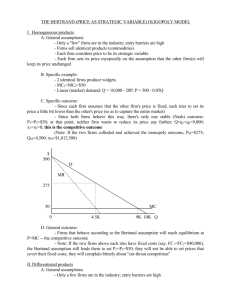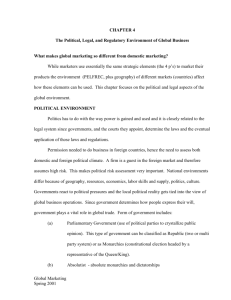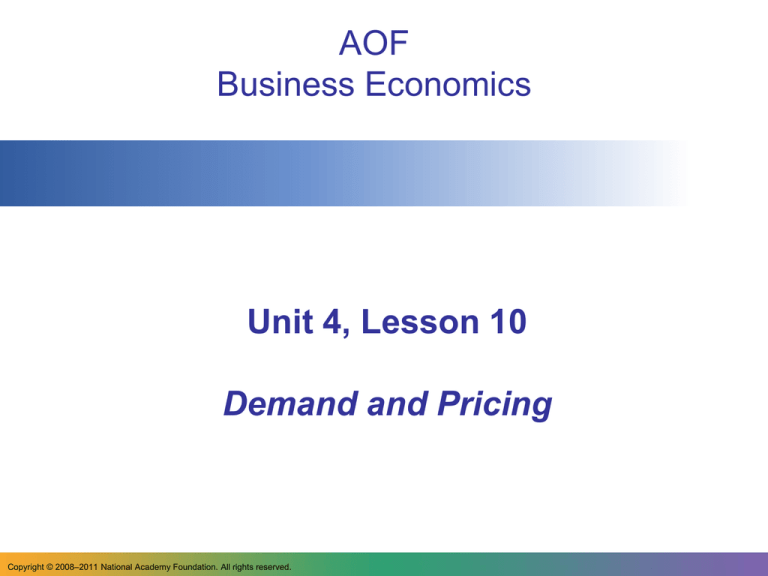
AOF
Business Economics
Unit 4, Lesson 10
Demand and Pricing
Copyright © 2008–2011 National Academy Foundation. All rights reserved.
A business is motivated by profit
•
•
Firms will grow avocados
only if they can make a
profit
To make a profit, the price
must exceed the cost of
growing them
How much does price need to exceed cost
to entice a firm to enter the market?
Breaking even isn’t enough
Firms won’t grow avocados
unless their return on
investment (ROI) is positive.
One way to assess ROI is
through a yearly “rate of
return”: total profits divided by
total investments.
How much more would you have to make
above total costs to launch a business?
Production Cost
+
Opportunity Cost
+
How much profit =
To invest or not to
invest, that is the
question
Increased demand creates profit opportunities
• The low-calorie avocado increases demand
• People will buy more of them at any price
$1.09
0.99
0.89
0.79
0.69
D2009 (low-cal introduced)
D2008
50 100 150 200
250
When demand increases, what signal does this
send to the marketplace?
When demand changes, so do price and supply
• When demand goes up, the
supply and demand
equilibrium changes, and
prices rise, at least at first
• Increased price means
increased profit
• Firms already producing
avocados will produce
more, AND new firms will
start to grow avocados
When
demand
goes up
Price
goes
up
How might the production from these new firms
impact avocado prices?
Then
supply
goes up
Low-calorie avocados increase demand
Firms respond only to the increase in price
that leads to an increase in profit
$1.09
S
0.99
0.89
0.79
0.69
D2009 (low-cal arrive)
D2008
50
100
150
200
250
How might this impact revenue and profit next year?
Supply and demand continually adjust
• Profits provide an incentive for firms to start
producing avocadoes, which increases supply
• Increased supply means prices will fall
$1.09
0.99
0.89
0.79
0.69
S2008,2009
S increase
D2009 (low-cals appear)
D2008
50 100
150 200
250
The competitive market is self-balancing
As Adam Smith wrote in
Wealth of Nations, the
competitive marketplace
can regulate the use of
resources for production,
and which products and
services are produced,
with economic efficiency.
Firms devote resources to
products and services that
are in demand. Pressure
from competitors forces
firms to be efficient.






